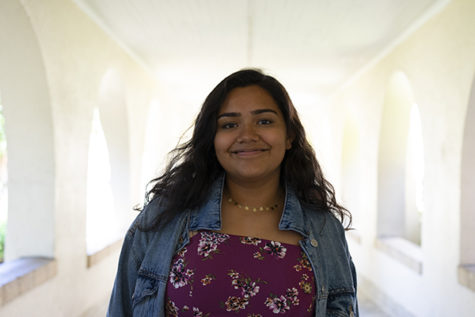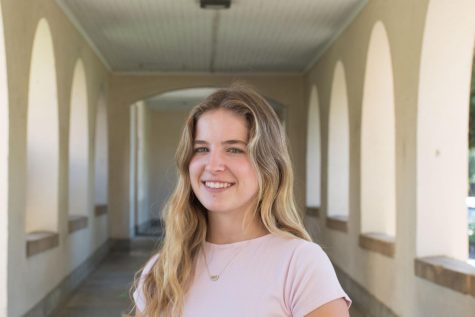Love Every Body
As we approach bikini and crop top season, Paly students share their viewpoints and personal experiences on body positivity and how they overcome struggles with body image
With summer right around the corner, the push for bikini bodies floods its way through the media, just as it does every year. The big corporations have found a way to pull money out of people across the country — by capitalizing on appearance.
In recent years, there has been an uprising of the body positivity movement, an all-inclusive movement that focuses on empowering individuals and combating the idea of a “perfect body image.” The body positivity movement manifests itself in different ways for different people. Paly junior, Josh Butler, recognizes that body image goes beyond weight or physical appearance. “Body positivity for me is less of a physical health thing and more of a mental thing,” Butler said. “If you honestly believe you are healthy and you feel great, then that is what matters.”
The body positivity movement brings up the point that the “perfect” body displayed in magazines and on social media is unachievable, leading to a never-ending cycle of fad diets and unhealthy weight loss products.
This movement aims to direct the conversation about losing weight away from physical appearance and numbers and guide one towards improving health and happiness for an individual, specifically mental health. Butler hopes the movement will inspire people to stop basing their actions on external or societal validation. “If you decide to get healthier, I hope it’s based on good mental health about yourself and your situation that you are chasing rather than something pointless like society’s view on what your body should look like,” Butler said.
Body love and body confidence can be extremely rewarding for some supporters of the body positivity movement. However, many individuals find that loving their body is not a realistic goal of theirs. A new helpful strategy the movement emphasizes, called re-framing, is basing self-worth on other aspects of an individual like hobbies, talents and intellect.
Edward Zhang, Paly senior, has struggled with weight-related bullying and finds re-framing to be a helpful strategy. “Whether people say [hurtful comments] as a joke or with malicious intent, I just acknowledge it and move on,” Zhang said. “I know I am doing my utmost to be healthy, and my larger size is not my only defining characteristic.”
Body-neutrality, like re-framing, is another tenant that has recently become a part of the movement, aimed at encouraging individuals to accept their bodies for what they are and be grateful for their body’s functionality.
Some athletes who spend hours in the gym gradually focus more on their physical appearance. However, Butler enjoys training to improve his skills for football season while focusing on functionality.
“Through sports, I know that sometimes the most aesthetically pleasing bodies are not the most functional,” Butler said. “Therefore, I don’t really feel any pressure towards the idea of ‘the perfect body.’ But to say I’m completely unaware and inattentive to what my body looks like compared to my peers or others on social media would be false.”
Butler is conscious of the dangers of comparison and doesn’t let it change his goals. Instead, he focuses on training for his sport and not his appearance.

While participating in sports can help promote body positivity for some, others have had negative experiences with athletics. Paly Freshman, Theresa Hart is a member of the Paly dance team and has been dancing since she was three years old. “There is this ‘dancer image,’ which is very skinny, tall and muscular, and I do not fit into it,” Hart said.
While she has never been criticized by teachers or peers within her dance company, she has often felt out of place. “When I would go to conventions and places where a lot of dancers were together, it was very obvious that I was an outlier,” Hart said. “I looked like an outlier.”
Hart notices that the “dancer image” has been subconsciously adopted by many of her dancer peers. “When people hear dancers, they have an idea of what somebody looks like,” Hart said. “That can hurt your self-esteem, especially when people say you shouldn’t be a dancer. I get told that if I was taller and bulkier, I would probably be good at football. Comments like that are really awkward.”
Changing society’s view of the “right body” for any sport will require respect and representation. “It’s always nice to see other people who look like me in dance,” Hart said. “It’s not just about being represented; it’s being respected for what you’re representing.”
Like Hart, Paly freshman Hana Foster encountered confusing feedback about her body that was also rooted in sports.
After participating in a season of softball over the summer, she noticeably lost weight due to the daily exercise. “When I visited cousins or friends, I received many more compliments about the way I looked than usual,” Foster said. “It was nice to hear, but I wondered why I was being treated better after changing. It made me put more pressure on myself to look slimmer.”
While the struggle with body image is universally shared among all demographics, Foster says that young people can be especially vulnerable. “Even at a young age, many kids see what they are ‘supposed’ to look like, whether it’s from a commercial, a picture, or even their friends or family telling them,” Foster said. “These first impressions can last for a long time and can affect their lives in the future.”
Young people easily pick up the negative messages in a world surrounding their bodies, so positive messages are crucial.
Hart says that the body positivity movement is especially needed for the younger demographic. “It’s more important that we share these messages of body positivity with teenagers,” Hart said. “It can make somebody feel significantly better and know that maybe they’re not alone in something or that people are going to accept them, no matter what they look like.”
Hart wishes she had more positive messages about body image as a child. “I’ve always been on the bigger side, and I was ruthlessly bullied from ages eight to ten,” Hart said. “That combined with the lack of representation around me in the dance world made me feel even more isolated.”
When she became older and more mature, Hart was able to change her perspective on what she saw around her. “When I went to these massive conventions, as much as I saw a lot of skinny people, I also saw other people who looked like me and it made me feel a lot better because they were just as talented as dancers.”
Foster found that her struggle with body image also started at a young age. “I would wear a hoodie to school every day, ashamed of what I looked like,” Foster said. “I didn’t think I would ever be ‘pretty’ if I wasn’t a certain weight.”
By the end of middle school, Foster began to shift her mindset away from what other people thought and focus on what made her happy. “I would ditch the hoodie every now and then to wear dresses, skirts, and anything that I liked,” Foster said. “Doing whatever I wanted with myself totally changed what I believed about bodies.”
The body positivity movement helped Foster take ownership of her body instead of lending it to other people’s criticisms. “I have now learned that I look beautiful in any shape,” Foster said. “If I ever want to try to look different, it will be my choice and not anyone else’s.”
As the summer months approach and the weather gets warmer, bathing suits and shorter clothing can easily amplify insecurities. Yet, Foster hopes that teens who support the movement can uplift one another.
“Being positive about your and other people’s bodies can be one of the most important mindsets to have,” Foster said. “It can take a very long time to realize this, but I hope everyone will notice that no one other than you should determine whether you look beautiful or not. No matter what [you] look like.”
Art by Wallie Butler

2018-2019 - Staff Writer
2019-2020 - Social Media Manager
2020-2021 - Creative Adviser
Hear more about me!

2020-2021 - Staff Writer
2021-2022 - Managing Editor
I joined C mag because I have always been interested in art and design and wanted to pick that...

2020-2021 - Staff Writer
2021-2022 - Social Media Manager
2022-2023 - Multimedia Director
I joined C Mag because I wanted to explore how art can...







